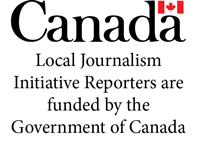A couple of decades ago, hospitals hit a funding crunch as federal and provincial governments struggled to balance their budgets.
The result was described euphemistically as “trimming deadwood” from a wasteful system. Who can forget the one that still sets teeth to grinding, “doing more with less?”
Hospital budget cuts came to be described in terms of bed closures. Hospitals did not physically get rid of beds; what they did was fire the people who cared for the patients who would have occupied those beds. Bed closures was a discrete way of saying how many nurses would receive layoff notices.
The cuts went deep. A whole generation of nurses was forced out of Ontario’s hospitals. Many found employment in the United States. Some found health care related positions – not necessarily as nurses – in the private sector. Far too many changed careers completely or left the workforce.
Hospitals struggled to stay open through sharing services, forming partnerships and outsourcing. The Local Health Integration Network system brought in another very well-paid level of administration to “help” hospitals make further cuts.
Many opinion pieces were published about the situation, asking what would happen when the nurses with enough seniority to keep their jobs hit retirement age. The people who would have been ready to step into leadership positions and mentor rookie nurses were either employed by Texas or Florida hospitals – that were glad to have them and paid them accordingly – or were in other careers.
For a career in nursing, education is only the beginning. It is followed by years of extra training as new technology and information becomes available. Skills require constant practice and fine-tuning. Mentorship by more senior people is essential and ongoing.
The fear a couple of decades ago was that the day would come when there would be a handful of highly experienced nurse-managers ready to retire, and a lot of young nurses without the experience, knowledge or desire to replace them.
That day has arrived.
In other words, this is not the year to develop food poisoning or break a limb skiing during the holidays. Your local emergency department may well be closed due to lack of staff.
The situation will not improve anytime soon. Provincial announcements of funding to hire hundreds of nurses are meaningless – colleges and universities can ramp up their programs, but it will be years before those students have the skills and confidence to staff a rural emergency department overnight, when there may be only one other nurse in the hospital.
A chain is only as strong as its weakest link. The COVID-19 pandemic showed the folly of nickel-and-diming health care. The most fragile link proved to be long-term care, where the virus wreaked havoc and killed thousands.
Other countries saw hospitals impacted, with staff forced to make heart-breaking decisions on which patients to treat and which to let die. A recent spike in COVID cases in Alberta had hospitals in the western provinces on the verge of doing that. There are worries that Ontario and Quebec could be next.
Ontario’s hospitals weathered initial battles in the pandemic war relatively unscathed – relatively being the key word. Patients suffered from having surgeries and treatment postponed. Staff suffered from working too many hours under difficult conditions, including having insults hurled at them by misguided individuals desperate to express anger and fear about COVID. What happens with Omicron is anyone’s guess.
People might forget that the nurse shortage was already causing concerns before COVID. Post-war baby boomers were aging rapidly and entering a stage in their lives when they required extra care. Instead of planning for this very situation, various levels of government continued squeezing hospitals, holding them to budget “increases” that did not keep up with inflation.
The recent acknowledgement that more nurses are needed to “fix” health care’s ills comes lamentably and dangerously late.
This entire community wishes our nurses the best as hospitals seek new ways to support them and bring new nurses up to speed – real heroes, one and all!



